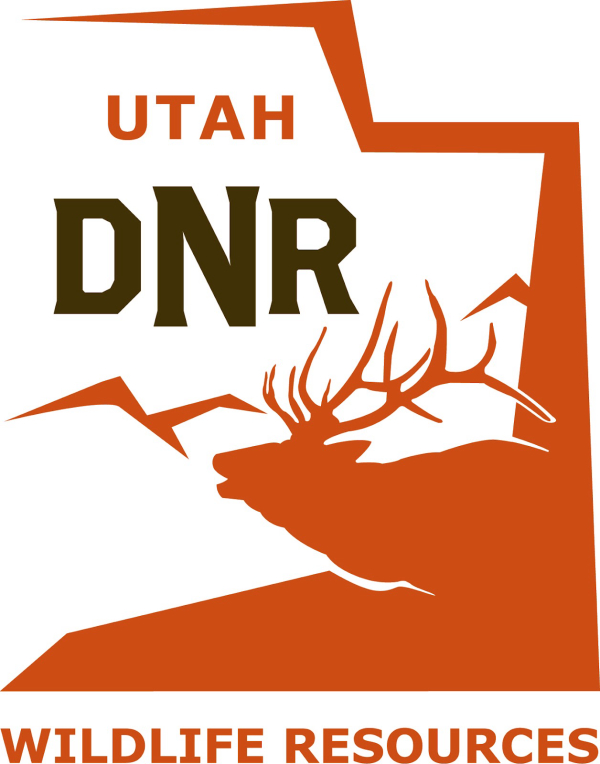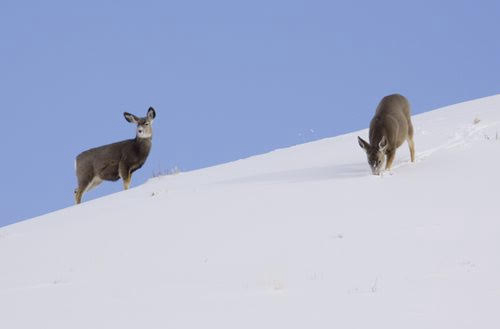Pro Hunters Avoid These Whitetail Hunting Mistakes
Editor’s Note: Today’s advice on effective whitetail deer hunting was sent to us by the pros at Knight & Hale Game Calls
 |
The white-tail deer rut is the single most talked about aspect of hunting, yet may also be the most commonly misunderstood. The rut can be broken down into three distinct phases: the pre-rut, peak of the rut and the post-rut.
Pre-Rut Phase
Prior to the increase of deer activity leading up to the pre-rut phase, bucks will spend the majority of their summer in all-male groups of three or more, commonly referred to as ‘bachelor groups’. These bachelor groups will most often be seen late in summer evenings feeding together. As autumn nears and the velvet begins to peel from the bucks’ antlers, hormone levels in each buck begin to spike, and the group’s collective tolerance begins to wane. It as during this same time, when the antlers cease growing and begin to calcify, that the bucks begin sparring with each other to vie for hierarchy. As hormone levels continue to increase the bucks break out of their groups and spread out in search of their own turf.
Top Pre-Rut Mistakes
1. Leaving the rattle calls at home during the early season. “What most hunters don’t realize is that rattling is very effective in the early season, because bucks are doing a lot of sparring at this time,” said Chuck Tiranno, an Ultimate Hunting Team member of the Knight & Hale Game Calls pro staff. This is not the time to mimic a violent battle between two 140-class bucks, but instead lightly tickle the antlers to create an image of two bucks testing each other.
The breaking up of bachelor groups signals the approaching pre-rut. During the pre-rut, does are not ready to be bred, but bucks will keep tabs on them. Bucks go about their business of making scrapes, rubs, feeding and occasionally checking out the does.
When the bucks disperse from bachelor groups, each usually stakes out a territory to call home. Each buck will create a series of rubs, or a rubline, on trees surrounding the perimeter of its home turf.
2. Hunting a perimeter rubline for more than a day or two. “If you find a fresh rub, look around to see if you see more through the woods,” Tiranno said. “If you see more and they appear to be in a line, often this is the buck’s perimeter and not his bedroom. A cluster of rubs, and not a line, is indicative of the center of a buck’s home turf.”
Likewise, there will often be a series of scrapes along this perimeter rubline. “The scrapes – called secondary scrapes – will be fairly small and don’t feature a licking branch. Primary scrapes most often will also have a licking branch, an overhanging limb that the bucks rub their heads on, and primary scrapes are where you want to be.”
3. Not hunting a primary scrape. Primary scrapes are visited by bucks of all ages. Look for a larger-than-average scrape that features a licking branch. If it appears fresh, with few leaves over the soil and a pungent musky odor, it’s a hot spot. “When hunting a primary scrape, freshen the scrape with some buck or doe urine, and be sure to bring a deer call. Primary scrapes are like a website’s message board. All kinds of deer troll by and check to see whose been by, and leave a message or two of their own.” As the pre-rut continues, bucks will pay more and more attention to the does and will begin the chasing stage. The does still are not ready to be bred, but the bucks will begin trailing them sometimes to the point of chasing.
Peak-Rut Phase
Key to this buck activity is another key whitetail hunter word, “estrous.” “The word ‘estrous’ means that an animal will stand for mating and not run away,” Tiranno said. “So the peak of the rut is when most of the does are standing where you hunt.” As the peak of the rut nears, bucks will spend their time near does, keeping constant tabs on their receptivity. At the peak, a buck and a doe will travel and bed together for a day or so, then the buck will move on to find another receptive doe.
Top Peak-Rut Mistakes
1. Hunting a buck’s home range during the peak of the rut. “Hunting a buck’s bedroom during the peak of the rut a hit or miss situation,” said Tiranno. “A buck may not return to his home range for several days. It’s old advice but it rings true: hunt the does during the peak of the rut to find the bucks.”
Hunting big bucks during the peak of the rut features an air of unpredictability. When a doe is receptive to a buck, the two will remain together for eight to 24 hours, then the buck is off to find another doe. This makes funnels and “shortcuts” important hunting location. Shortcuts are void areas such as an open pasture between two patches of doe-rich woods or cover. Old country cemeteries are classic shortcuts. Whereas a buck normally would use a drainage or thin line of timber to travel from one patch of cover to another, at the peak of the rut that same buck may cut straight through the short cut.
2. Not utilizing calls, scents and decoys during the peak of the rut. The time just prior to, during and just after the does are standing for bucks in your area – a span of about 10 days to two weeks – is when hunters should use all of the tools the hunting industry has provided to draw in mature bucks. These tools can work anytime during the season, but mature bucks may be more receptive during the peak of the rut. Here are a couple of considerations concerning using these tools.
“Anytime you use a deer call, you’re positioning the deer downwind of you, so you’d better be as scent-free as possible. And, if you’re not using scent in combination with calling, you’re going to cut your chances of getting that buck,” Tiranno said. Tiranno is a pro staffer for Code Blue Deer Scents, and swears by Code Blue’s one-deer-to-one-bottle guarantee. “Nearly every other scent company’s urine is a blend of urines from many different deer. Code Blue’s urines are from a single animal.
“When you call, the buck usually heads downwind to scent check. If you don’t have some buck urine or Tarsal Gland out, your calling won’t be as effective.”
Post-Rut Phase
Peak breeding activity often dies out just as quickly as it starts, which is literally overnight. Cruising, trailing, chasing all abruptly and suddenly come to an end. Big bucks that were extremely visible during the previous two weeks have now disappeared. Heck, you’re not even finding any fresh rubs or scrapes – or any other fresh sign that could indicate where the bucks might have gone. Now what do you do? Hang it up for the season?
Top Post-Rut Mistakes
1. Putting away the deer hunting gear after the peak of the rut. Bucks return to their home territories and recuperate after the physically demanding peak of the rut. Feeding is important during the post-rut, as is resting in a secluded area unaffected by hunting pressure. A mature buck may move its home range if hunting pressure during the peak of the rut has burned out its original home, which happens often on public land or other areas with heavy hunting pressure. However, studies have shown that bucks often don’t move to the next county, but will stay in smaller secluded spots near where they were lived before the craziness of the rut.
2. Not using peak-of-the-rut techniques during the second estrous cycle. Most does were bred during the peak of the rut, but the bucks still maintain some contact. About a month after the peak of the rut, does that weren’t bred come back into estrous, causing a smaller, less activity charged rut peak. Use the same tools and tactics used during the peak of the rut to take a mature buck during late post-rut.
3. Watching football during extreme cold. While the suggestion of shunning the race or the National Championship seems absurd to many, horrible weather during the late season may be the very best time to score a monster whitetail. Chris Parrish, better known as the guy whose won two Grand National and two World Championship turkey-calling contests, lives for single-digit-temperature deer hunts. “You don’t have to be out there before dawn, freezing your tail off,” Parrish said. “Deer will feed every four hours or so during super-frigid temperatures, and that means that sometime during the day they will have to feed. Wait until 11 a.m. or so and hunt a secluded food source for several hours during midday.” He’s not suggesting heading out in a snowstorm, but just after the precipitation ends, mature bucks will head to the food.
– See more at: http://www.knightandhale.com/field-notes/avoid-whitetail-hunting-mistakes#sthash.4z82nr9P.dpuf





